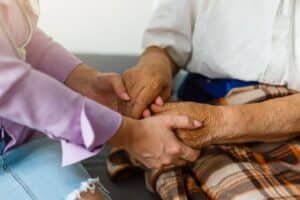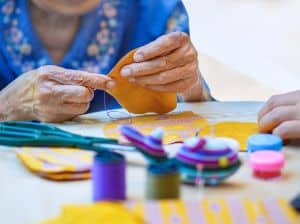
Over 3 million U.S. citizens aged 65 and older move each year. Some are retirees moving to new homes on their own. Some are downsizing to enjoy a simpler life in their later year. Others require assisted living situations or close-knit communities with on-call medical services.
Moving is complicated for everyone. It can be downright scary for senior citizens, especially when they’ve lived in their previous homes for a significant time. Help a senior in your life find peace of mind with their next move with the help of this comprehensive guide.
Ideal Locations for Senior Relocation
According to recent data, the most affordable states for a senior to move in 2024 and 2025 include:
- West Virginia
- Delaware
- Georgia
Affordability is assessed based on multiple factors, including the costs of basic living, healthcare, and other essential services.
The most popular locations for senior citizens to move in 2024 and 2025 are:
- South Carolina
- Arizona
- Florida
All three states offer vibrant communities for retirees in all income brackets. They also host hundreds of quality retirement homes, assisted-living facilities, and senior-centered housing areas.
Planning and Preparing for the Move
Moving a senior citizen is a different process than basic household moving. Seniors often have special needs that need to be met for a new living situation to work.
When planning a relocation for seniors, keep the following thoughts in mind:
- Work closely with a senior to identify their wants and needs. Their happiness comes first, even if they must compromise due to medical and mental health conditions.
- Do your research. Some retirement homes promise cheaper rent, yet those rates come at the expense of quality senior services. Look into reviews and ask if they have friends who have retired in the area.
- Be careful about considering private homes and apartments. If there are current or eventual medical needs to be met, try to be mindful when choosing a living situation.
- If a senior has mobility issues, look for places with fewer stairs and/or proper accessibility.
- Consider professional help from household moving companies and car delivery services. The easier the relocation for a senior (and yourself), the better.
Organizing Belongings for a New Home
You can help the senior in your life make a smoother life transition by helping them organize their belongings for a more efficient move. Here are some quick tips to consider:
- Organize essential belongings into easy-to-find boxes, containers, and bags. Label them clearly in a big, legible font.
- Map out the size differences between a senior’s previous and new home. Organize and box up accordingly.
- Work with them to identify belongings for donation or sale. Also, help them clear trash or items that would eventually be thrown away.
- Move boxes to their designated rooms and stack them in an easy-to-access, easy-to-open configuration.
- Help them start the unpacking process and visualize things in real-time. Ask if they need additional help to remove certain items from boxes or simply to complete decorating the home.
Utilizing Car Transport Services for Relocation
How much does it cost to ship a car? It’s less than you might think.
A high-quality car transport service can limit the stress of a senior citizen’s relocation. Whether they have one car or multiple, a top door-to-door car shipping company will move vehicles from their previous home to their new location efficiently and securely.
Whether you need to ship a car to another state or across the country, it pays to trust the professionals. Budgeting for auto transportation eliminates the risk of DIY auto moving. It also saves wear and tear and potential maintenance costs down the road—a budgetary nightmare, especially for seniors on a fixed income.
Get free auto shipping quotes within seconds with our accurate car ship cost calculator. We are happy to help.

Navigating the Transition to Senior Living
There is a stigma attached to senior living, especially for older folks moving out of their comfort zones and into scary, new situations. To help a senior move from home to home with confidence and hope, consider the following:
- Look for communities with built-in support systems, social gatherings, clubs, and other enjoyable activities.
- Consider communities where they already have friends or help them build connections with planned meet-ups.
- Consider logistical concerns such as finding new doctors, ensuring proper medications, and acquiring necessary wheelchairs and accessibility equipment.
- Work with a senior to organize their financial affairs and a proper budget. How much do they plan to spend each month? Are they looking to travel? Do they need daily, weekly, or monthly assistance?
- Stay in contact. We all forget things during the relocation process. However, such omissions could be critical for seniors isolated in a new place. Also, emotional support is vital when big life changes come into play.
Ensuring Emotional and Social Support
All life transitions are tricky, and they can be even tougher for seniors. Isolation only exacerbates fears of change and aging, and a lack of emotional support could negate the positive effects of a new living situation.
Whether you’re moving a parent, a grandparent, or a close friend, try to be mindful of the community you’re moving them to. Help them find friends or acquaintances with shared interests, be it as simple as playing cards. Also, it helps to keep the lines of communication open and check on them as much as you can.
If you need a reliable auto transport company to move a family member or friend, contact us directly at (224) 218-2949. Alternatively, visit our car ship cost calculator to receive your free quotes today.








